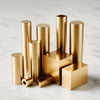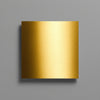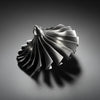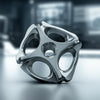What is Sheet Metal Fabrication-----This Blog can Tell You All.

What is Sheet Metal Fabrication?
A manufacturing process transforming metal sheets (≤16mm thick, including aluminum alloys) into components using:
-
Shearing
-
Punching
-
Press brake bending
-
Welding
-
Riveting
-
Stamping/forming
Key characteristic of sheet metal parts:
Uniform wall thickness throughout a single component.
Common Sheet Metal Fabrication Techniques
Sheet metal fabrication involves multiple processes including cutting, punching, bending, welding, etc.
Sheet Metal Cutting
Primarily used to separate metal sheets into parts of specified shapes/sizes per design requirements. Methods include:
-
Mechanical Cutting
-
Shearing
-
Punching/Blanking
-
Laser Cutting
-
Plasma Cutting
-
Waterjet Cutting
-
Manual Cutting
-
Oxy-fuel Cutting
-
Hand Saw Cutting
-
Laser Cutting:
A high-precision, efficient method using a high-energy-density laser beam to melt/vaporize material.
Advantages:
-
High precision: ±0.1mm tolerance
-
High speed: Ideal for thin sheets
-
Complex contours: Cuts intricate curves/patterns
-
Minimal HAZ (Heat-Affected Zone)
-
No tooling required: Cost-effective for prototypes/low-volume
CNC Turret Punch Press:
-
Processes various sheet metal parts with automatic complex hole punching/shallow forming
-
Nibbling: Creates large round/square/obround holes via step punching
-
Special techniques: Blind holes, shallow draws, countersinks, flanged holes, embossing, ribs
Sheet Metal Bending
A common forming process applying force beyond material yield strength using dies/tools to create plastic deformation.
CNC Press Brake Operation:
-
Precision bending with ±0.1° angular tolerance
Sheet Metal Welding
Joins metal sheets by melting base material/filler under heat/pressure. Common processes:
-
CO₂ Welding (GMAW)
-
TIG/MIG Welding (GTAW/GMAW)
-
Laser Welding
Selection depends on material/thickness requirements.
Sheet Metal Fabrication Workflow
-
Design: Customer provides drawings/3D models → Engineering creates flat patterns & assembly drawings
-
Material Selection: Choose appropriate metal (see materials section below)
-
Pre-treatment: Degreasing/cleaning/surface preparation
-
Laser Cutting: Precise contour cutting (±0.1mm)
-
(Optional) CNC Punching: Hole piercing/notching/embossing
-
Bending: Form 3D shapes via press brake
-
Welding: Join components as needed
-
(Optional) Surface Treatment: Powder coating/plating/polishing
-
Assembly: Final product integration
Sheet Metal Materials Selection
| Material | Properties | Applications |
|---|---|---|
| SPCC (CRS) | Unprotected surface → Requires painting/plating; prone to rust | General fabrication |
| SECC (EGS) | Electrogalvanized zinc coating; good corrosion resistance | Electronics enclosures |
| SGCC (GI) | Hot-dip galvanized; thicker zinc layer; poor weldability | Outdoor structures |
| SUS301 Stainless | High strength/hardness after heat treatment; spring properties | EMI springs/contacts |
| SUS304 Stainless | Excellent corrosion resistance; no work hardening | Medical/food equipment |
| Phosphor Bronze | High fatigue resistance/conductivity | Electrical contacts/terminals |
| Brass | Superior conductivity; corrosion resistance | Decorative/electrical components |
| Aluminum | Lightweight; anodizable; alloy-dependent properties | Aerospace/automotive |
| Carbon Tool Steel | High hardness/wear resistance after heat treatment | Cutting/die components |
| SPTE (Tinplate) | Tin-coated steel; solderable; corrosion-resistant | Food packaging/containers |
Surface Treatments
Pre-treatment: Remove oil/rust/welding slag
Common Finishes:
-
Powder Coating
-
Electroplating (Zn/Ni/Cr)
-
Hot-Dip Galvanizing
-
Anodizing (Aluminum)
-
Brushing
-
Screen Printing
Material-Specific Treatments:
-
Aluminum: Anodizing/powder coating
-
SPCC: Powder coating/painting
-
SGCC: Electroplating
-
SECC: "N" material (bare), "P" material (painted)
Key Terminology Used:
-
HAZ = Heat-Affected Zone
-
Nibbling
-
Turret Punch Press
-
Yield Strength
-
Plastic Deformation
-
EMI = Electromagnetic Interference
-
CRS = Cold Rolled Steel
-
EGS = ElectroGalvanized Steel
-
GI = Galvanized Iron
-
Posted in
cnc machining, R&D, rapid prototyping





